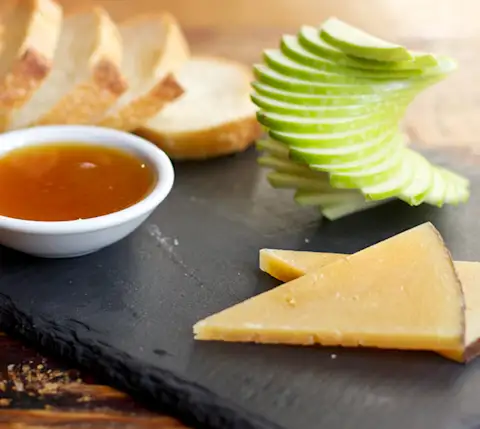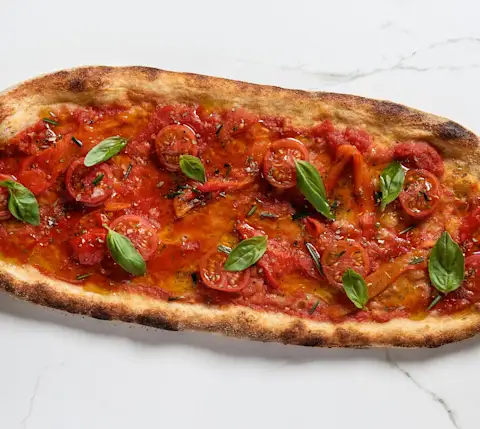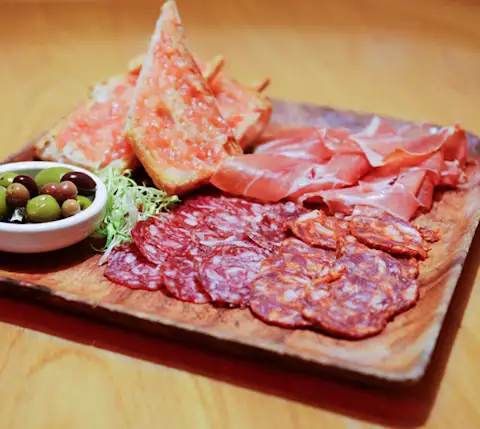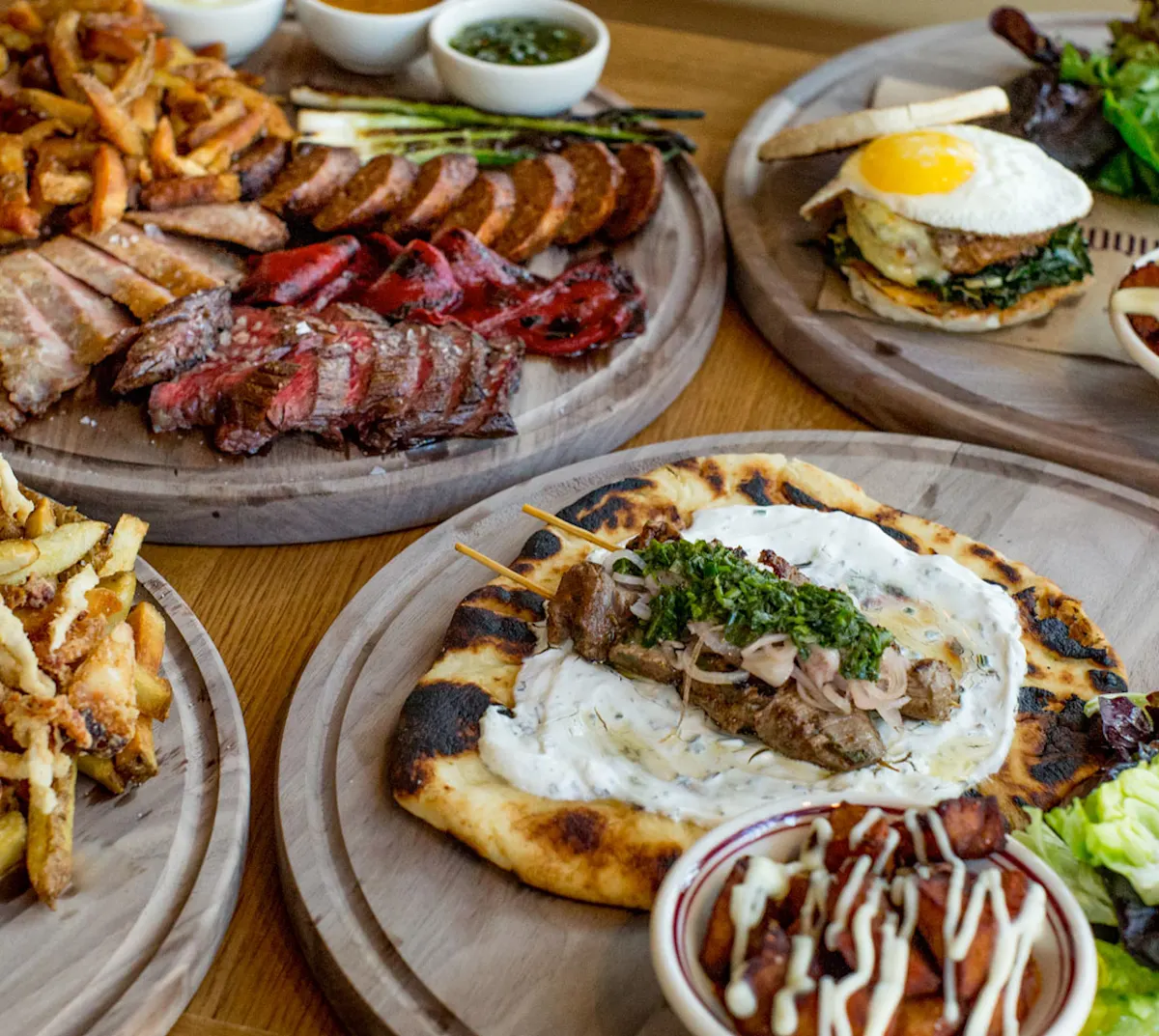While hitting a tapas bar makes for a lively evening out, hosting a tapas party might be even more fun. But why cook when you can order tapas made by an actual professional? The only work you have to do: decide which bites to choose. But what to order?
There’s actually a method to crafting the perfect tapas spread. That’s why we recruited Meg Grace Larcom, corporate chef of Boqueria restaurants in New York, Washington D.C., Chicago, and Nashville, along with Nicolás López, concept chef of José Andrés’ Mercado Little Spain in NYC, to walk us through navigating a tapas menu. Follow their advice and savvy strategies for making the most out of everyone’s favorite Spanish snacks.

Invite a crowd
As tapas are meant to be a shared experience, Larcom suggests making a party out of it. “Tapas are best when you are having guests over,” she says. “They are a great entertaining shortcut. You can re-create the convivial atmosphere of a tapas bar at home by ordering an assortment of different bites to graze on.” López suggests ordering three or four tapas per person before ordering raciones (larger sharing portions) for a complete meal. Extra credit: Cue up a flamenco guitar soundtrack for an especially transportive meal.
Start with a tabla
Tablas are Spanish cheese and charcuterie boards. They are a great way to sample a selection of hams, such as spicy chorizo and salty Serrano, and fine Spanish cheeses such as Manchego (sheep’s-milk cheese) and Mahón (cow’s-milk cheese). Ordering a preselected platter relieves the burden of choice. “Tablas are a perfect start and great for a crowd,” Larcom says. The tabla de quesos y embutidos at Boqueria in D.C., for example, comes with a generous serving of Manchego, Caña de Cabra (goat’s-milk cheese), jamón Serrano, and chorizo Ibérico, along with olives, pan con tomate (toasted bread rubbed with tomato), and raisin-walnut bread. As many tapas restaurants offer a wide selection of cured meats and cheeses, it’s also easy to create your own for a more elaborate tasting by mixing and matching from spots such as Boston’s Toro.

Turn on the oven
When ordering at home, López reminds that “some foods travel better than others.” While he points out that fried dishes such as croquetas (meat, vegetable, or fish fritters with béchamel sauce) or patatas bravas (fried potato wedges with creamy sauce) don’t make the trip quite as well as other bites, Larcom adds that they can be easily re-crisped in an oven or, better yet, an air-fryer. “The best strategy is to start with the meat and cheese, and while people are enjoying that, reheat the crispy items and dive into those next,” she suggests. López also notes that “stewy items,” such as albondigas (meatballs), a favorite at Chicago’s Tapas Valencia, are easy to reheat in a microwave.
Fortunately, most tapas do travel well. Best bets include dishes that can be eaten at room temperature, such as gazpacho (chilled tomato soup), tortilla Española (potato and egg omelet, like the version at NYC’s Boqueria), conservas (tinned fish), and pintxos, which are skewered items set on a piece of toasted bread. Gildas, for example, are pintxos from the Basque region that spear olives, anchovies and pickled peppers for one bracing bite.
Lopez says that if a restaurant has a “DIY” option, as Mercado Little Spain offers, then customers can finish the dishes at home by following easy instructions. With their pan con tomate, for example, “you can toast the bread, brush on the olive oil, and rub the bread with tomato yourself so that you end up with a dish as fresh as if you were sitting in the restaurant,” he says.
Add to the variety
After polishing off the meat and cheese and crispy items, Larcom suggests rounding out the meal with a bite of seafood, such as boquerones (pickled white anchovies) or gambas al ajillo (garlic shrimp), which come by the platter at 100 Montaditos in Miami, before moving onto vegetables like piquillo peppers, which might be stuffed with bacalao (codfish), or mushrooms marinated in garlic and oil. “In addition to ordering the classics, think seasonally, especially when ordering vegetables,” she adds. “So go for the asparagus in spring, the corn in the summer, squash in the fall, and beets in the winter, for example.”
Overall, balance is key to the perfect parade of tapas. Keep a variety of textures, temperatures, and flavor profiles in mind and mix up regional dishes for a flavorful geography lesson.

Pair it all up
Larcom is a proponent of pairing tapas with sangria, as “the whole experience was built around sangria consumption,” she says. “And sangria is our big seller for a reason.” Spanish wines, such as rioja, txakoli, albariño, and a crisp sparkler like cava also bring out the best in tapas. Sherries are a popular choice in Spain too, while ice-cold Spanish beers, such as a light Estrella lager, make for refreshing partners. For a nonalcoholic option, López recommends Kas Spanish sodas. “They come in orange, lemon, or apple flavors, and are made with real juice,” he says. “They go quite well with tapas. Think of them as alcohol-free sangrias.”
Save room for sweets
In the spirit of tapas, both Larcom and López suggest shareable sweets. Larcom is a big fan of churros. “Yes, they are fried, but they are like doughnuts, which don’t necessarily have to be eaten piping hot,” she says. “It’s the dipping sauces, whether chocolate or dulce de leche or Nutella, that make them so much fun.” She also recommends capping off a sequence of tapas with buñelos, another doughnut-like treat. López prefers a traditional Spanish cheescake (a Philadelphia favorite at Amada) or flan for a fitting finale.






